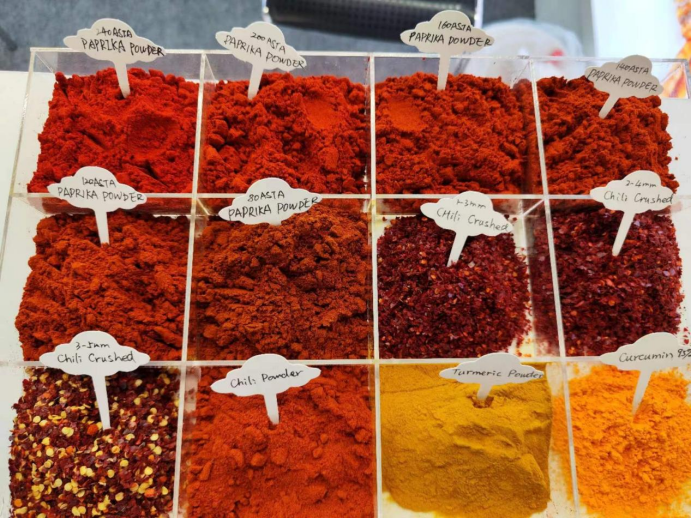- No. 268 Xianghe Street, Economic Development Zone of Xingtai city, Hebei 054001 China
- Byron@hbhongri.cn
Exploring Different Varieties of Paprika and Their Unique Flavor Profiles
The Different Types of Paprika Spice A Flavorful Journey
Paprika, a vibrant red spice derived from ground bell peppers and chili peppers, is a staple in many kitchens around the world. Its unique flavor and color make it an essential ingredient in various cuisines, particularly in Eastern European, Mediterranean, and American dishes. Often used to season and add color to everything from stews to rice, paprika offers a diverse range of varieties, each with its distinct taste, color, and usage. In this article, we will delve into the different types of paprika spice, exploring their characteristics and culinary applications.
1. Sweet Paprika
One of the most common types, sweet paprika, is made from sweet, mild red peppers. This variety is often characterized by its bright red color and sweet flavor profile, making it a favorite for adding depth and warmth to dishes without overwhelming heat. Sweet paprika is widely used in Hungarian cuisine, featured prominently in dishes like goulash and chicken paprikash. Its mildness allows it to be sprinkled generously over dishes or used as a base for sauces without fear of significant spiciness.
2. Smoked Paprika
Smoked paprika, known as pimentón in Spain, is made from peppers that are dried and smoked over oak fires before being ground into a powder. This process imparts a rich, smoky flavor that can transform a dish. Smoked paprika is divided into different types based on the level of sweetness, such as sweet smoked paprika and hot smoked paprika. It is a key ingredient in Spanish cuisine, commonly used in chorizo, paella, and various tapas. The deep, smoky essence of the spice can also enhance roasted vegetables, meats, and even popcorn, adding complexity to otherwise simple dishes.
3. Hot Paprika
types of paprika spice

For those who enjoy a bit of heat, hot paprika delivers a spicy kick. Made from spicier varieties of peppers, this paprika can range from mildly hot to intensely fiery. It is often used in dishes that require both color and a robust flavor that packs a punch. Hot paprika is prevalent in Hungarian pörkölt (a type of stew) and is also a popular addition to spice blends, marinades, and rubs for meats. Its heat can vary significantly, so it’s essential to taste and adjust according to personal preference.
4. Hungarian Paprika
Hungarian paprika is renowned worldwide for its quality and flavor. Often considered the gold standard for paprika, it comes in various grades, from delicate and mild to hot and spicy. The distinctiveness of Hungarian paprika is its richness and aromatic qualities, which are influenced by the specific types of peppers grown in Hungary, particularly in regions like Szeged and Kalocsa. This paprika is celebrated for its use in traditional dishes such as goulash and is often used as a seasoning for soups, stews, and meats. A hallmark of Hungarian cuisine, it is favored not just for its flavor but also for the vivid color it imparts to dishes.
5. Spanish Paprika
Spanish paprika, similar to Hungarian paprika, offers a range of flavors and heat levels. It is specifically produced from peppers grown in Spain and is often associated with a smoky flavor due to the traditional smoking process. Spanish paprika can be found in different forms including dulce (sweet), picante (spicy), and agridulce (bittersweet). Each variety brings its own taste and is used in various regional dishes throughout Spain, from chorizo to paella. The use of Spanish paprika enhances the flavor profile of many Mediterranean dishes, adding both color and depth.
Conclusion
Paprika is more than just a simple spice; it is a versatile ingredient that varies widely in flavor, color, and heat. From the sweet allure of sweet paprika to the boldness of hot and smoked varieties, each type of paprika offers unique culinary possibilities. Understanding the different types of paprika spice can empower home cooks and culinary enthusiasts alike to create dishes that are not only visually stunning but also rich in flavor. Whether incorporated in a traditional Hungarian stew or sprinkled over roasted vegetables, paprika remains a beloved and essential spice that continues to inspire chefs around the globe.
-
Unlock the Power of Capsicum Frutescens Fruit Extract – A Flavorful Boost for Your Products!NewsJul.22,2025
-
The Vibrant World of Powder Paprika – Unlock Flavor and Color in Your DishesNewsJul.22,2025
-
The Golden Power of Turmeric Root Powder – A Superfood for Every Kitchen!NewsJul.22,2025
-
Ignite Your Dishes with Crushed Red Chilli – A Spicy Delight Awaits!NewsJul.22,2025
-
Explore the Golden Benefits of Turmeric Powder – A Superfood for Every Kitchen!NewsJul.22,2025
-
Discover the Richness of Paprika Food – A Flavorful Journey Awaits!NewsJul.22,2025







